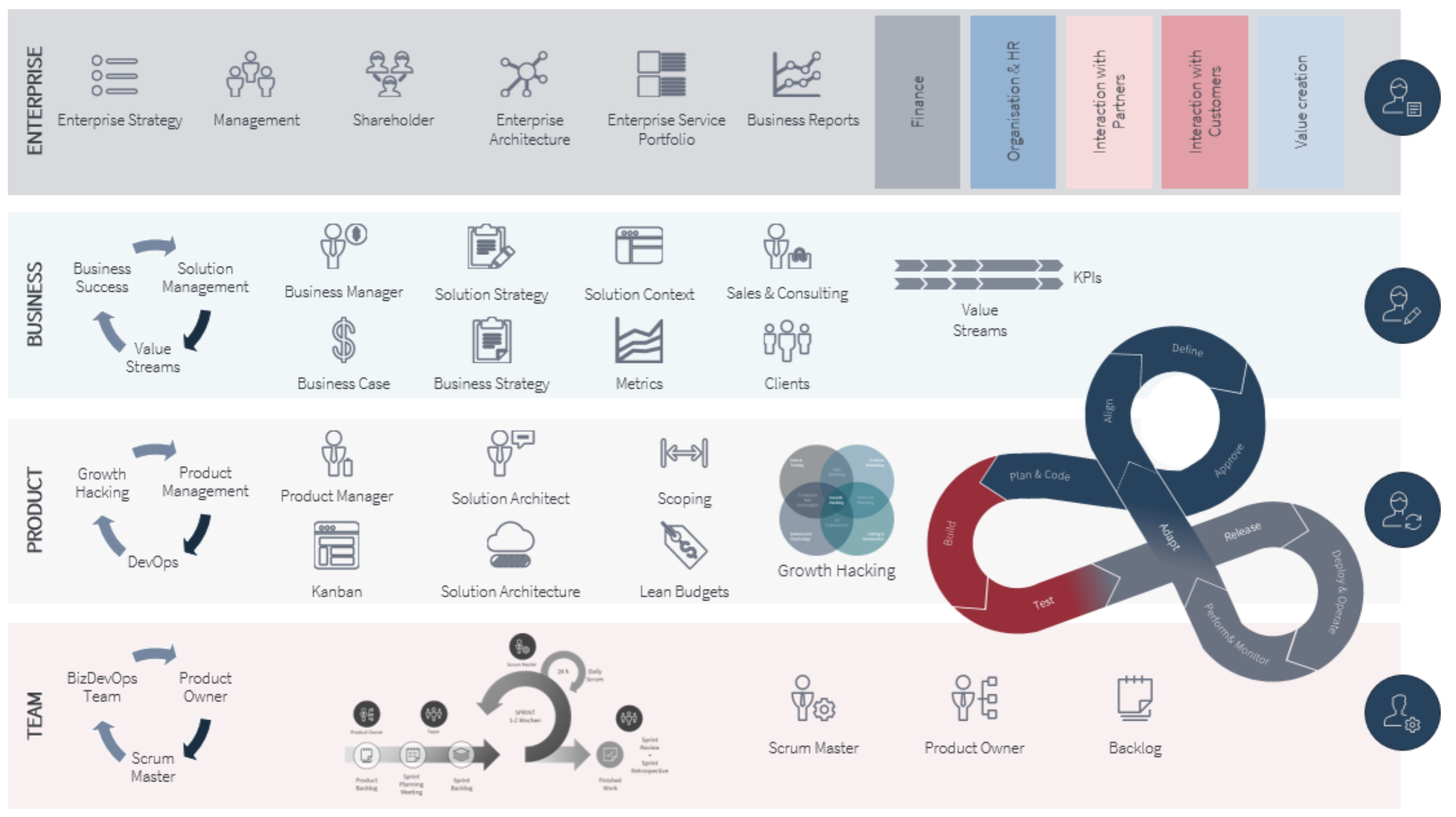Agile organizations
Insights» Agile Organizations
Many organizations face the challenge of responding to changes in the market, new technologies, growing competition from start-ups, customer needs and a lack of human resources. Companies are thus constantly exposed to internal and external influences and changes. Agile development such as SCRUM is hard to think of from software engineering. This type of software development allows it to quickly adapt and develop products. In classical forms of organisation, departments often cannot keep up with this speed due to their working methods and the potential of agile development cannot be exploited.
Agile organizational forms make it possible to respond to these challenges. The decisive factor for this is that decisions and tasks are allocated and taken on a decentralised basis. This is the biggest advantage of agile organizations. For this to succeed, it is important that everyone pursues the same goal.
In order for this decentralisation to be successful, a framework is also needed, as in traditional organisational forms.
But what is an organization?
Organizations provide a framework for a system in which resources deliver performance to achieve business goals. In order to achieve the business goal, several resources are usually needed, which then need to be coordinated. For this system to work, a framework is needed that dictates, coordinates, controls and thus reduces complexity. The common goal of all parties is crucial. The success of companies depends on the cooperation of resources and how people and technology are used. It is crucial how well organizations manage to generate through processing and output and thus achieve an increase in value. The adaptability of organisations is crucial for their existence and success.
How do you transform into an agile organization?
By aligning the organization with the expectations of customers/users, companies are evolving from an IT service provider to a digital solution provider. Vertical product cutting is a prerequisite. Digital products are no longer cut horizontally, which means that there is no break age through organizational units such as data centers and development. As a result, products and services can be considered holistically. Product managers take on this task. From the collection of requirements, development, testing, operation, lifecycle management and growth hacking, all tasks related to the product are taken over by a team. In classical organizations, there is a separate team per task, so the holistic view and vision for the product is missing. Introducing BizDevOps, all of these tasks are brought together in one team. These interdisciplinary teams make it possible to generate economic benefits from the digital transformation.
The transformation to a digital solution provider and the introduction of a vertical product cut make it necessary to change the organizational form. The fact that the responsibility for whole products is now carried by teams must also lie in the decision-making competence. This must make the form of organisation possible and be lived by all stakeholders. There are various agile organizational models, which differ in their areas of application and in their administrative overhead.
Agility must be introduced at all levels of the organization. The management level must also be involved in the agile way of working.

Insights» Agile Organizations
See more technical articles
Christian Buchegger
Germany: +49 (0) 30 84415801
Austria: +43 (0) 800 500122
E-Mail: office@reqpool.com
Get in touch
Arrange an appointment

Christian Buchegger
Germany: +49 (0) 30 84415801
Austria: +43 (0) 800 500122
E-Mail:office@reqpool.com

